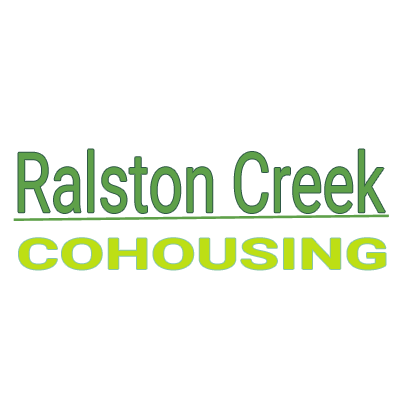 For Immediate Release: ralstoncreekcohousing.org
For Immediate Release: ralstoncreekcohousing.org
Contact: Sue Seecof, Publicist 720-371-5451
Urban Green Living on the Rise: The Promise of Ralston Creek Cohousing
June 28, 2018 – In the bustling Denver metro area, reports of housing shortages are in the news nearly every day. In modern American life, people suffer from isolation and a lack of personal connection to their neighbors and their environment. But now, here’s an opportunity for people to find real community and a “green” housing arrangement with great amenities – through Ralston Creek Cohousing (RCCH).
Along the Ralston Creek Trail, west of Old Town Arvada, a vibrant neighborhood is emerging. In a rural setting with an urban vibe, imagine a modern village powered by solar and ground source energy. Within this development of town homes, row houses and single-family dwellings, an energetic group of families is coming together to live in a condominium building with private and shared space. This is just one of the many styles of cohousing in the metro area, and it’s slated to be multi-generational.
RCCH members sponsor social gatherings, such as pot luck meals, an ice cream social, and a free watermelon booth at Arvada Trail Days. On Saturday, July 14, they will present an informational slide show at the Arvada Library, 7525 W 57th Ave from 11-1pm, followed by a tour the neighborhood. All are welcome.
Cohousing is a group of households who come together because they want to know and collaborate with their neighbors. Cohousing communities worldwide feature a “common house,” in essence a clubhouse where members and guests gather for meals and activities. It is a close and caring community that balances privacy with shared activities. All members participate in governance.
A core group of members, a green technology developer, and a designated building site within the Geos Neighborhood (near 69th and Indiana) have enabled this shared vision to move toward the design phase. Sustainable homebuilding and neighborhood design are becoming increasingly important for both developers and homeowners, and Geos is a shining example of how these concepts are incorporated into new projects. The neighborhood has already won numerous awards for planning and sustainability, featuring design emphasizing solar optimization, water retention, shade trees, geothermal heating and cooling, and “green building” techniques. Residents will reap the savings in lower utility bills, and the environment benefits from reduced use of fossil fuels to generate heating, cooling, and electricity.
When it comes to RCCH in particular, picture a three-story building called, “The Gatehouse” with 20 private units of various sizes, parking underground, and the common house easily accessible on the first floor. The common house provides a professional kitchen, multi-purpose space for dining, meeting, projects, and socializing. Two guest bedrooms and bike storage complete this shared area. An outdoor courtyard, community garden, electric car share, and dog friendly exercise area allow residents to downsize without sacrificing amenities they enjoyed previously.
The Colorado Front Range has 15 cohousing communities, some dating back 40 years and some still in the forming stage. What makes RCCH unique is its commitment to sustainability coupled with the technology to actually achieve net zero or better.
The current members (seven households) are an eclectic group, with diverse backgrounds, work experiences and talents. All share a desire to be part of an intentional community. Three to five more like-minded families making the necessary financial commitment will allow an architect to design “The Gatehouse,” Being a RCCH founder provides members the exciting opportunity to be part of creating a new community, including determining processes, bylaws and design.
“We are already seeing a lot of excitement around Ralston Creek Cohousing, and our members can’t wait to see it come to fruition,” said Arnelle Burg, RCCH founding member. “We’re also proud to be part of the modern movements toward environmentally friendly building and stronger senses of cooperation within neighborhoods. Together, we can build and manage the type of community we all want to live in, and that’s the beauty of cohousing.”
As “The Gatehouse” plan moves forward the cohousers, the developer, and Geos neighbors are already working together to provide land for a CSA (community supported agriculture), while goats are actively clearing weeds and fertilizing undeveloped land.
“Think sustainable home design is just a fad?” says the National Association of Home Builders. “Think again. Green is growing and growing and growing. In 2017, more than one-third of homebuilders said green building was a significant share of their overall activity. By 2022, this number is expected to increase to one-half, proving that green home building is here to stay (and hopefully bound to become the status quo!).”
www.ralstoncreekcohousing.org
www.discovergeos.com
elemental.green/17-trends-for-sustainable-homes-in-2017/
#
